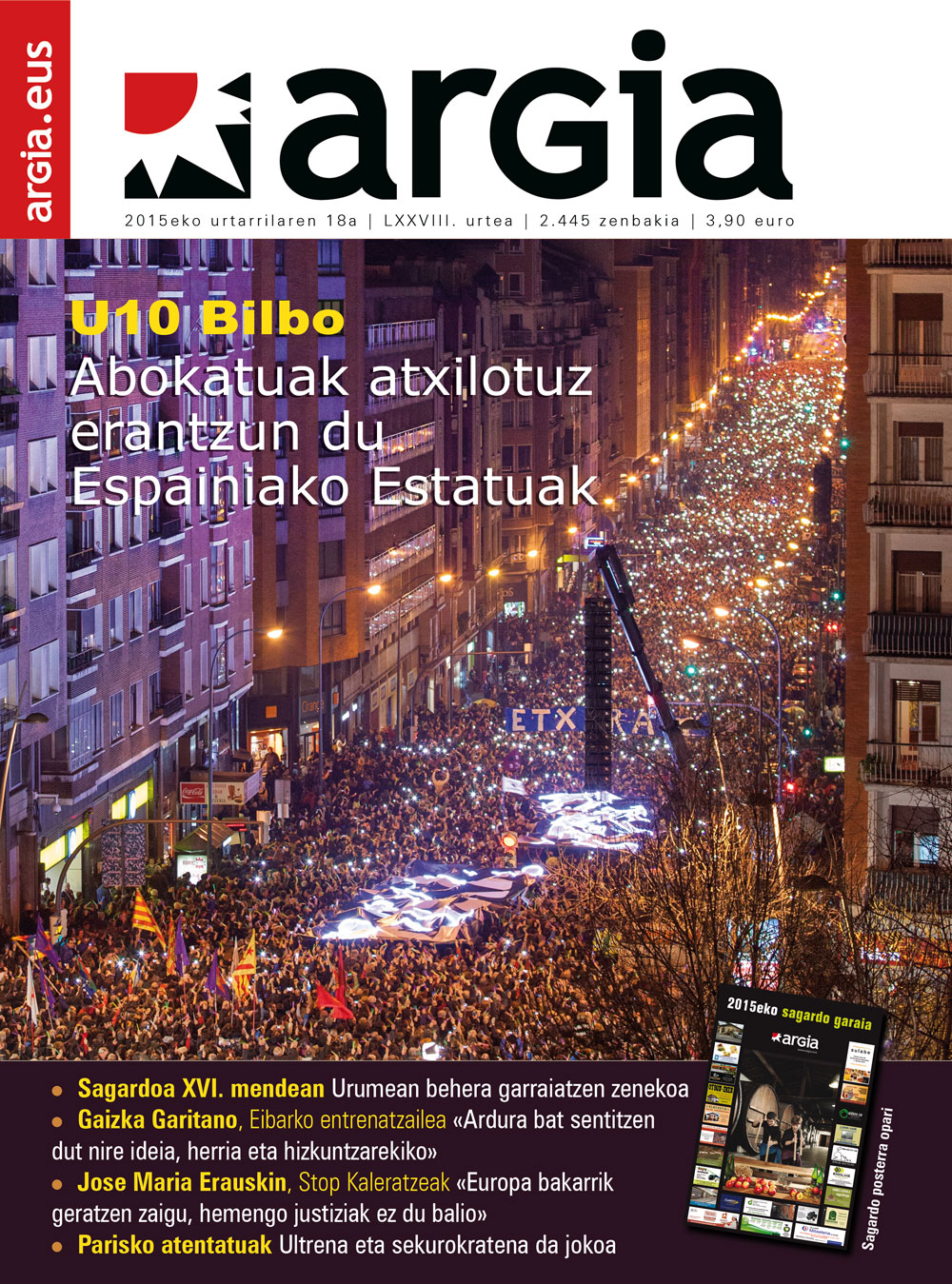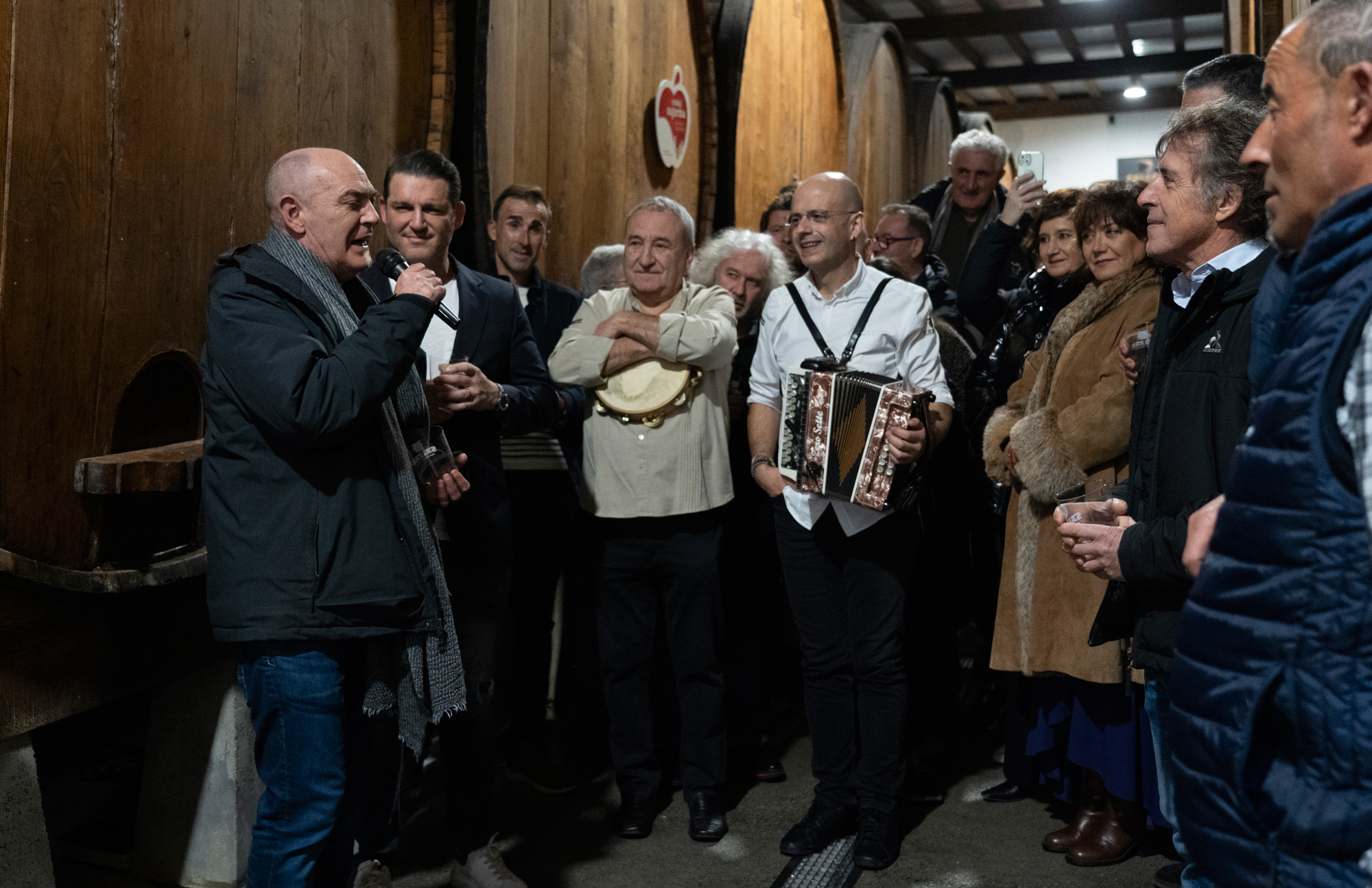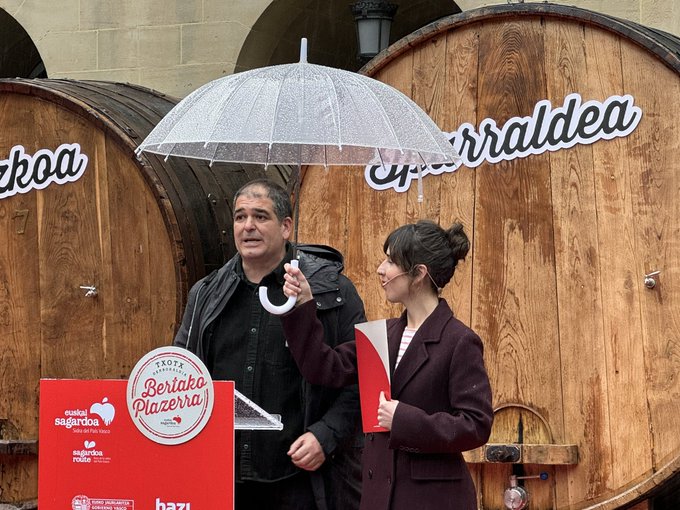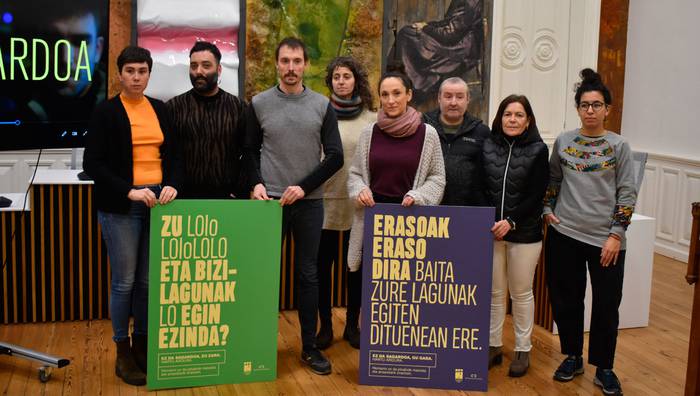Or if it existed or not… I was coming down the Urumea
- On the pretext that the txotx season has just begun, the sidrerías Petritegi and Lizeaga de Astigarraga have launched an initiative in which they have gone back centuries to make known the place that the cider has had in history.
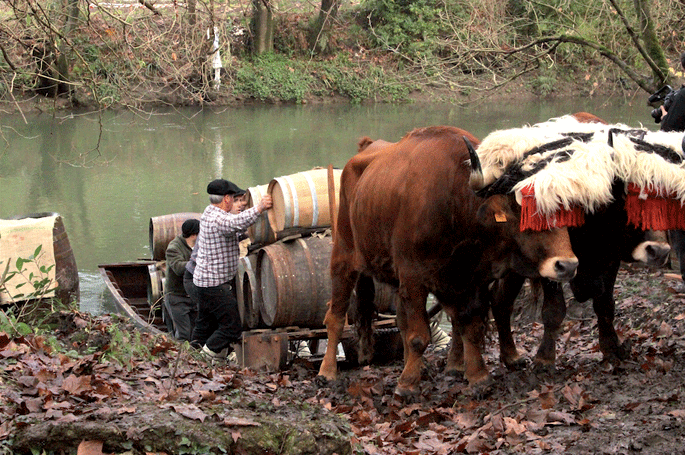
Petritegi and Lizeaga have made a trip to the 15th and 16th centuries in search of the origin of the two rural lagars, with the objective of knowing at first the life of the ancestors of the family, and the importance of the Urumea River. The current connects Astigarraga and Donostia-San Sebastián, and in the archives have been found remnants of the existing networks of relations between both localities, especially in the writings of purchase and sale. The wealthy of San Sebastian were interested in the apples' lands, as the cider had customers in the market. Several gentlemen bought the Astigarraga House Dukes, in which the tenants who would work during the year entered and the results were bolstered. In this second part played a significant role the Urumea, which carried cider in barrels along the river, and of course, other issues such as cider.
What is Donostia, without Urumea?
One theory doubts that San Sebastian would have become a commercial city like the one it is if he had not had a river of trade and transport like the Urumea. They say that those moves gave a tremendous boost to the development of the city, and without that, maybe things would go otherwise. It is difficult to know for sure whether the road of the city was going to be different, but there are traces of the past to know what has been with the Urumea; and with the movement floating in the river a great market opened to San Sebastian and to the Donostiarras.
Sidra to Newfoundland
Basque fishermen who travelled to Newfoundland in the 16th century used cider as a drink against scurvy. The San Sebastian ladies who had bought cassery lizards in the surroundings of Astigarraga already knew about these sea trips and would also smell the business. The fishermen spent months without stepping on land, and the cider was one of the elements they carried to survive on the boats. In addition to quenching thirst, the drink was suitable to prevent infections and diseases.
The boats departed from Pasaia to Newfoundland. Thus, the cider that was previously transported through the Urumea River to Donostia-San Sebastián was destined for the port of Pasaia. In the boats they threw many litres, and responding to all these needs required a great production and commercialization of cider. If the products were transported through water, the logic imposes the existence of small ports of loading and unloading along the river.
According to the information found in the files, both Lizeaga and Petritegi steelworks present the first data of the sixteenth century. By then, the San Sebastian masters of Petritegi and the lagar Gartziategi (dwarf where Lizeaga is currently located) appear in the writings. They were in the hands of two large: on the one hand, the head of Petritegi, Pedro Martínez de Igeldo, and on the other, that of Lizeaga, Juan Sánchez de Araitz.
Collaboration of the Albaola Foundation
Albaola is the Marine Heritage Foundation that aims to analyze the history of the waters, the sea and the sea in the Basque Country. The project started around cider, but has a direct or indirect relationship with the commercial movement of the Urumea River and the marine world. Thus, the Albaola Foundation is carrying out the sections corresponding to the water of the project. Work is being done on gathering information on the ports that were on the shores of the Urumea, and one of them is about to be rebuilt. Between Astigarraga and Ergobia there are fears that there will be four ports: Arbizu Portu (also listed as Aiozategi), Ergobia, Murgia and Gartziategi. The latter, as its name suggests, would be located at the height of today’s Lizeaga steelworks (Gartziategi farmhouse), and will be the port to be built. There they will be filled with cider (the wooden nave) and they will go down to Donostia-San Sebastian, as it would be at the time.
There was also cider in Astigarraga
However, not all cider was carried by the rich of San Sebastian. Part of the annual harvest – it seems that the quantity of this part was decided by the cacique itself – was left in the lagar de caserío, but not to open it as it opens today in the txotx season. The sidrys opened in an orderly fashion one after the other. In the village there were so many rustic lagars, the turn of each one of them was decided by drawing lots; and the next one opened as the cider of each lagar ended. So they ensured that they would drink cider from all countries. They remained open to the population, but people were not going to eat there, as has become customary. The juice was sold in jugs.
The difference between some sidrerías and others was in the hands of the lords or the caciques, who decided in the lagar the amount of cider they wanted to leave for the tenant. There was a different amount of apple juice in each syrup, but not according to harvest or production, but according to the generosity of the older ones.
Change of Law in 1765
By lot the banks were distributed and the law regulating the market was modified in 1765. From there, the population or purchasers did not have to respect a particular order, and the steelworks began to expand their offer, such as the pots. Probably, that moment was a turning point in the path of the hamlet lizards and cider, and people will begin to approach these areas in their spare time.
Sagardoa barrikatan, orain mende batzuk arbasoek egiten zuten moduan, alan jaisteko asmoa dute Urumean behera, Astigarragatik Donostiara. Baina 2016an izango da hori, Donostia kulturaren hiriburu izendatuko dutela aprobetxatuz. Asteburu osoko plangintza dute buruan antolatzaileek, eta lanak hasiak dira dagoeneko. Egitarauan hizki handiz, Alaren jaitsiera Urumean barrena. Horretarako, ontzia bera, garai batean izango zenaren modukoa, berreraikita dago; portua falta, ordea. Mende batzuk lehenago gaur egungo Lizeaga sagardotegiaren parean-edo zegoen Gartziategi portua berregiteko asmoa dute, Albaola Itsas Ondarearen Fundazioak lagunduta. Bertan beteko dute ala, sagardoz betetako barrikaz, Donostiara abiatu aurretik.
Baina ekitaldia probestuz, Astigarragako hainbat eragileri asteburuan parte hartzeko ateak zabaldu dizkiete; bi sagardotegiren historia txikia oinarri, herri oso baten ibilbidea dela azpimarratu baitute antolatzaileek. Talde eta herritar guztientzat egin nahi dute txokoa, bakoitzak bere alea jarri eta guztien artean egitarau osatuagoa lantzeko.
The txotx season has begun and citizenship has begun with enthusiasm to test the harvest raised in the wineries of the sidrerías. We cannot miss the annual ritual, this way of promoting and living Basque culture. But every tradition, whether voluntary or not, changes and the... [+]
Sagardogileak gero eta zorroztasun handiagoarekin jokatzen du sagardotarako sagarra aukeratzeko orduan. Hala ere, sagardo-litroen kopurua handia denez zail egiten zaio sagardogileari nahi dituen sagar-motak Euskal Herrian bertan aurkitzea. Ondorioz, sagarra kanpotik ekartzera... [+]
Hernaniarra naiz. Sagardozalea. Eskubaloira jokatu dudan hogei urteetan ezagutu ditudan emakume gehienek, nazioarte mailan jokatutako kirolari handiak barne, nik bezain beste gozatzen zuten sagardotegian garaipenak ospatzen genituenean, edo talde sentimendua kupel artean... [+]
Eguerdiko 13:00etan emango dio hasiera, proiektu solidarioak, 2018ko sagardotegi garaiari. Aurretik, trikitilariak eta Kalez Kale Kantariko kideak ibiliko dira herriko kaleetan, eta kirikoketa erakustaldia egingo dute Plazan. Irekieraren ondoren, bazkaria egingo dute Goiko... [+]
On 17 June, the Sagarno Eguna was held in Hendaia. About twenty years ago they began to celebrate it, but after a couple of years of rest, the Baleak association has already regained the initiative last year.
There has been some novelty at this year’s party: Hendaia's was, for... [+]
Larunbat honetan sagardo eguna eginen dute Hendaian. Duela hogei urte inguru hasi ziren egun hori ospatzen, baina urte pare bateko deskantsua eta gero, iaz berreskuratu zuen ekimena Balea elkarteak.
Egunotan ikusgai dago Sagardoaren ibaiak, bizitza iturri erakusketa Hernanin. Urumea eta Oria iraganean burdinari, ontzigintzari eta merkataritzari loturiko ibaiak izan zirela ikus dezakegu haren bidez.









